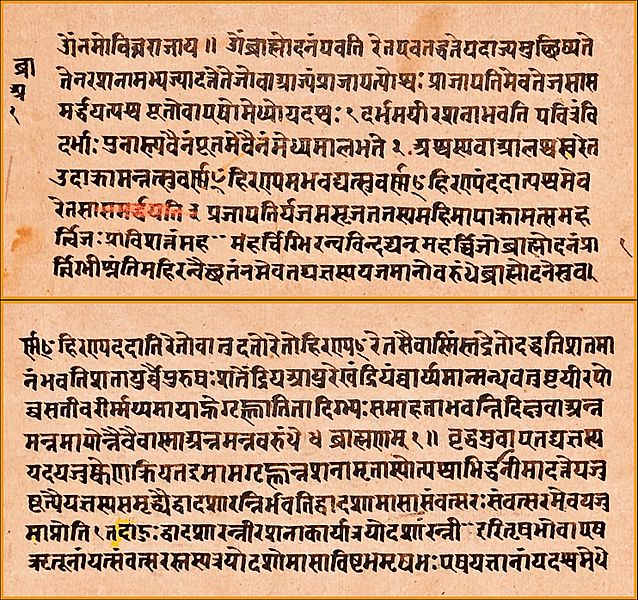Image: 13th-century Shatapatha Brahmana 14th Khanda Prapathaka 3-4, page 1r and 1v, Sanskrit, Devanagari script

Description: The Vedas are scriptures of Hinduism. They consist of four layers of texts: samhita, brahmana, aranyaka and upanishads (they also have Vedangas such as above, and appendices to these main layer of texts). The samhitas are dated to between 1500 and 1000 BCE. The Brahmanas and Aranyaka texts are probably from about 1100 to 700 BCE, while the Upanishads from about 900 to 200 BCE. Each Vedic layer consists of books. These oldest texts are in the archaic Sanskrit language. The Vedic texts between 900 to 500 BCE are close to the classical Sanskrit, which was formalized by Panini. The Brahmana hymns that cover a mix of topics: benedictions, yajna ritual methods and verses, mythologies, cosmologies, questions and riddles relating to many fields of human activities, drama and poems, philosophy and mystical speculations. The corpus of Vedic texts, as well all post-Vedic texts, are generally accepted to have been orally transmitted from generation to generation for over a millennium, till about the start of the common era. In Sanskrit, they were written in many Indic scripts. The scripture was written on palm leaf manuscripts, copied for preservation in Hindu temples and monasteries. Later paper and cloth versions were produced, where the page size was similar to the heritage palm leaf-like long pages. The above image is from a Shatapatha Brahmana manuscript. Each page is written on both sides (recto, verso). The image is of the front pages 1 front (recto) and 1 back (verso) from the 14th khanda of Prapathaka 3–4 folio of the Shatapatha Brahmana. The bolded letters are the text, the light diacritics, any colored marks, light dashes, characters and dots over or under the letters are coded markers found in Sanskrit manuscripts for readers and reciters, i.e. dandas separate the words/sentences/verses, avagrahas for various compounds, circles for the galitas, and the particle iti. Manuscript pages in the Hindu traditions (as well as Buddhist and Jain traditions) may also contain colored or light texts on the margins, which may be either corrections to a scribal errors or they are commentaries of the owner or some scholar / citations / reference-by-incorporation of another ancient Hindu scholar's work. Text language: Sanskrit Script: Devanagari The photo above is of a 2D artwork of a text that is over 2,000 years old, from a manuscript that was produced before the 19th-century. Therefore Wikimedia Commons PD-Art licensing guidelines apply. Any rights I have as a photographer is herewith donated to wikimedia commons under CC 4.0 license.
Title: 13th-century Shatapatha Brahmana 14th Khanda Prapathaka 3-4, page 1r and 1v, Sanskrit, Devanagari script
Credit: Own work
Author: Ms Sarah Welch
Usage Terms: Creative Commons Attribution-Share Alike 4.0
License: CC BY-SA 4.0
License Link: https://creativecommons.org/licenses/by-sa/4.0
Attribution Required?: Yes
Image usage

